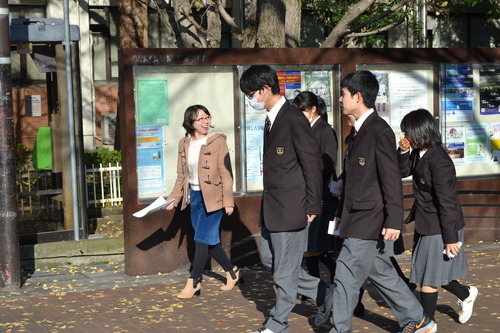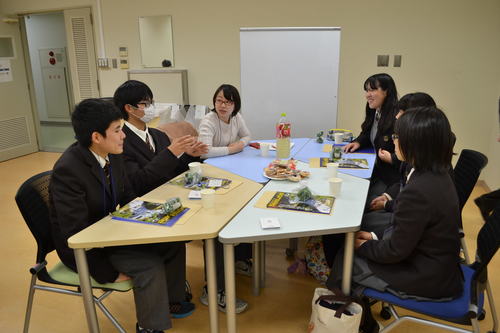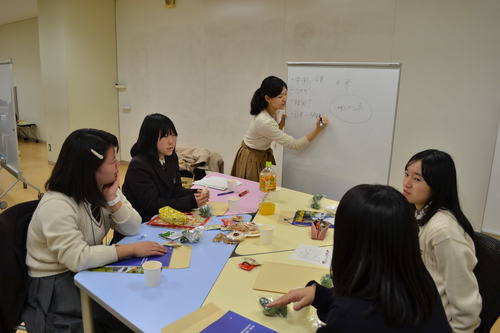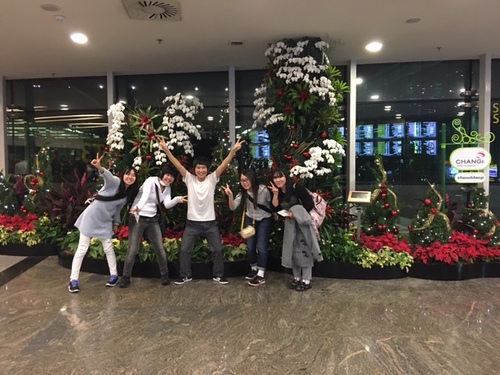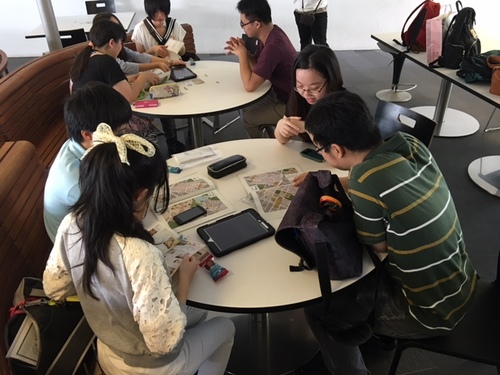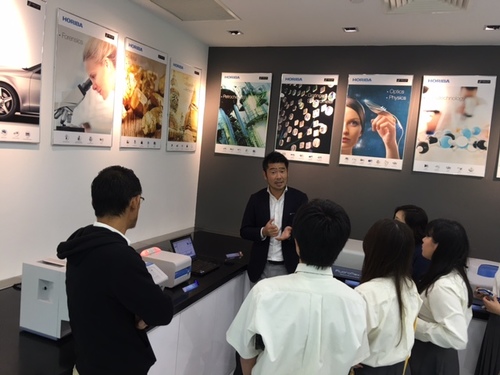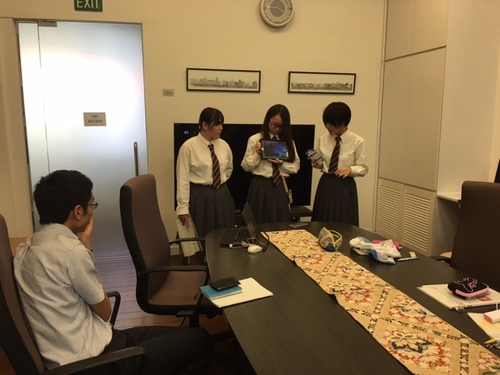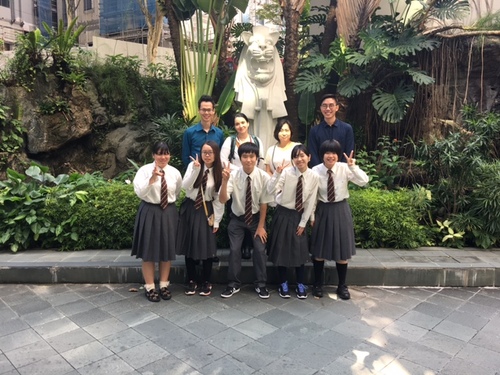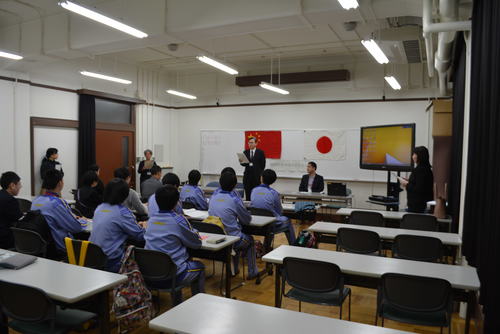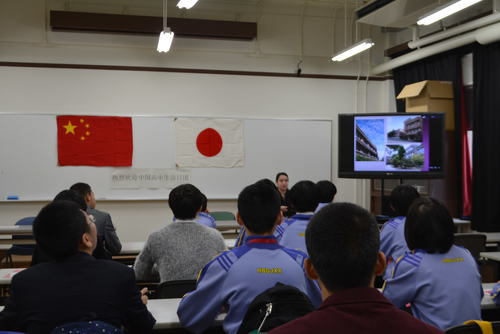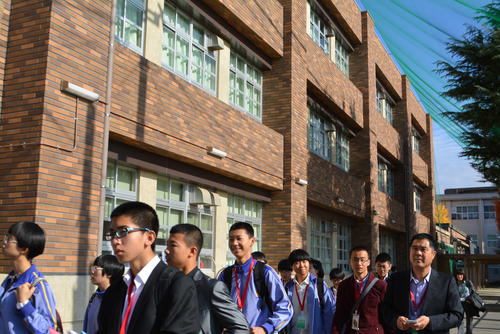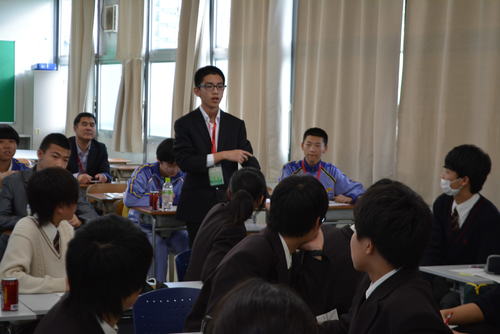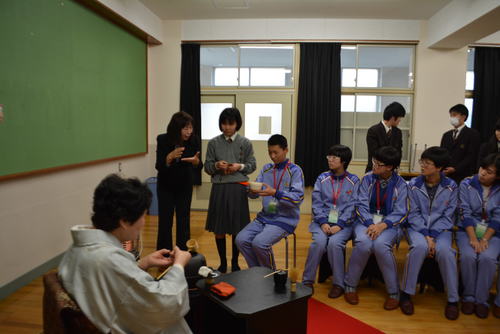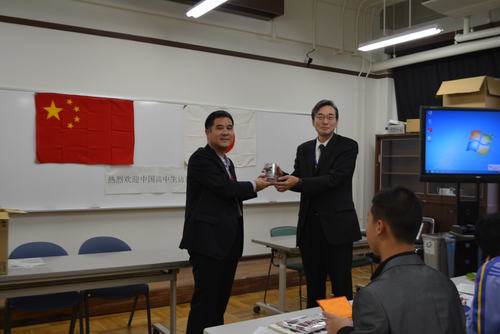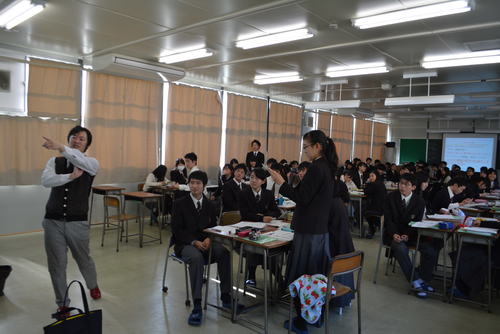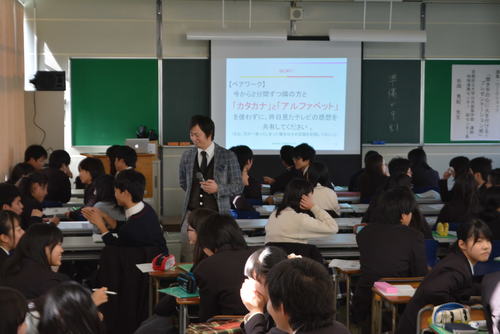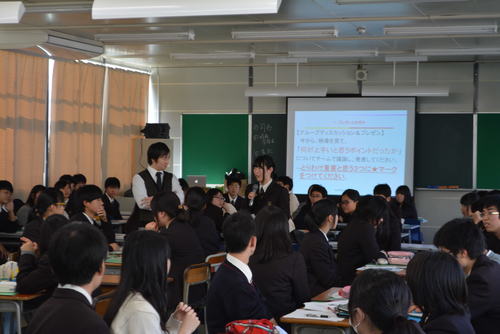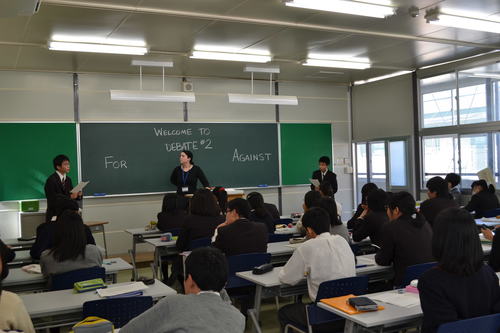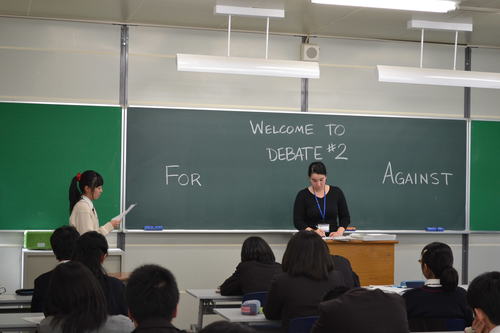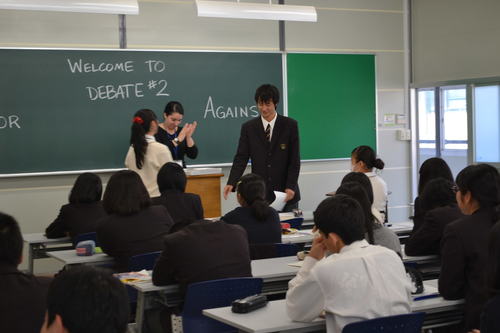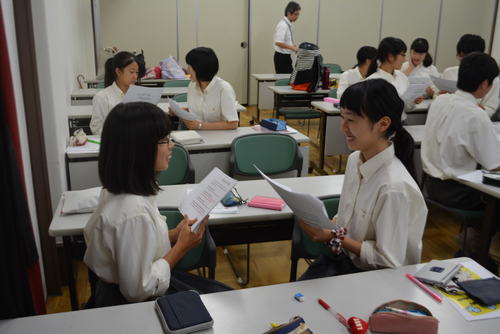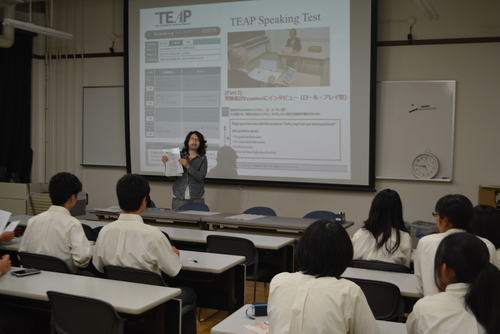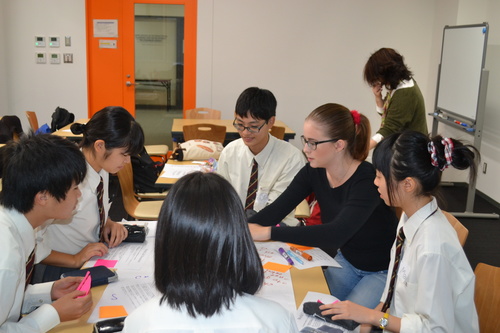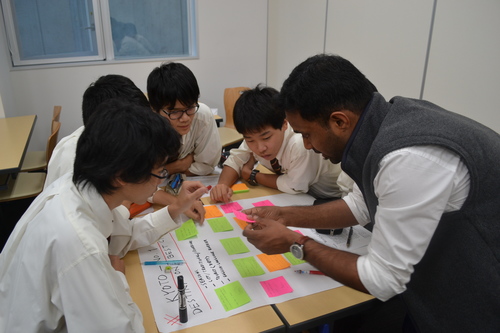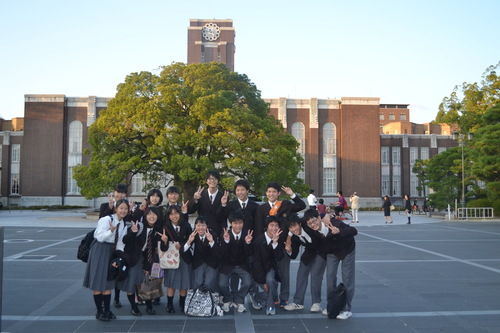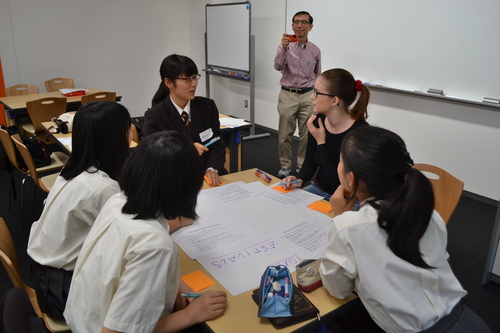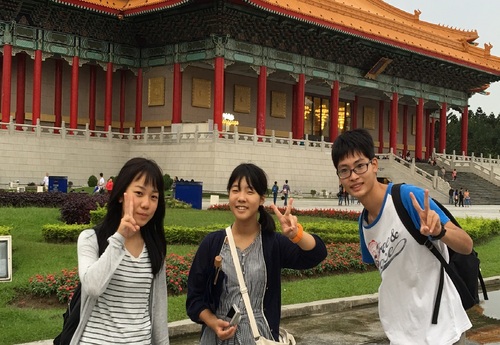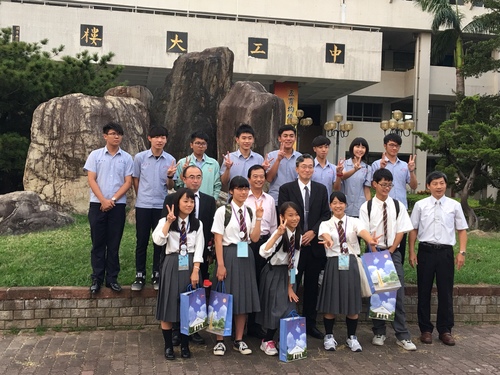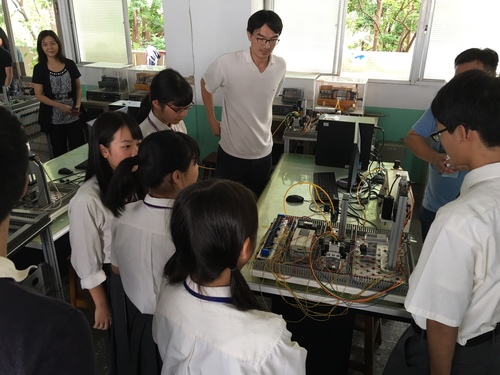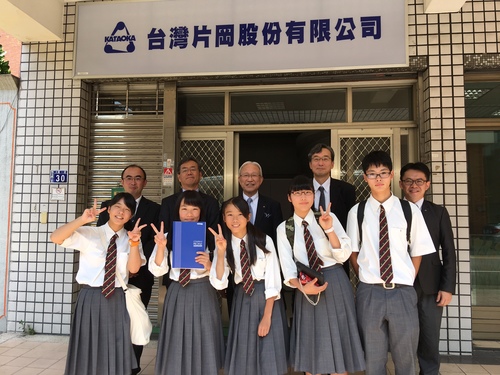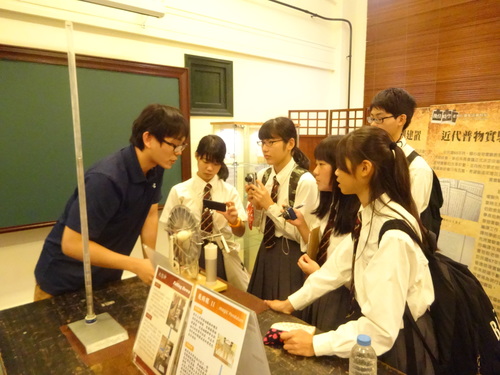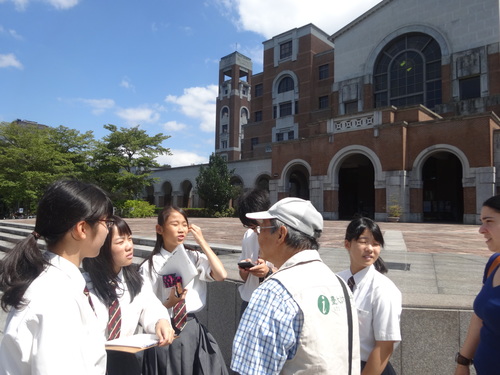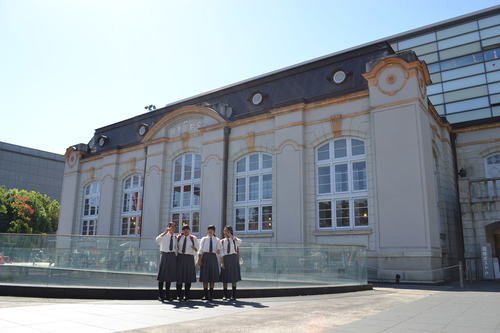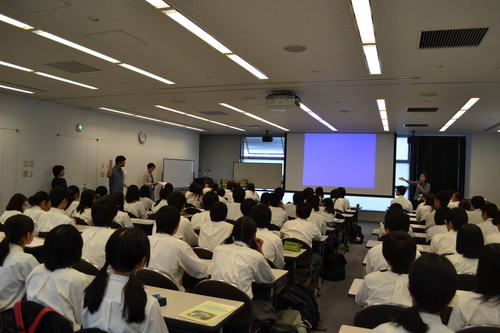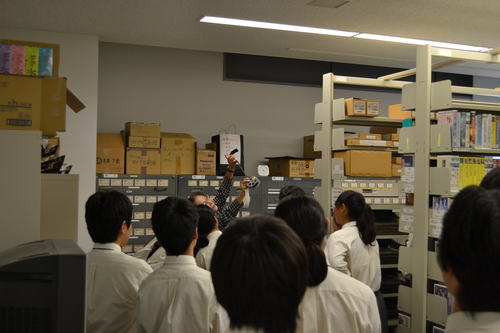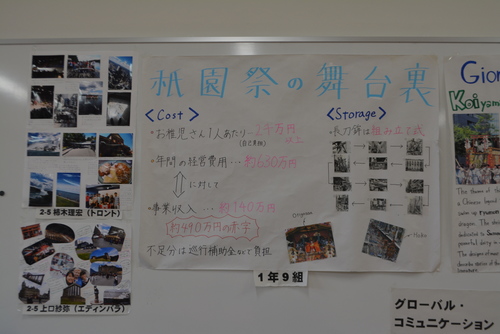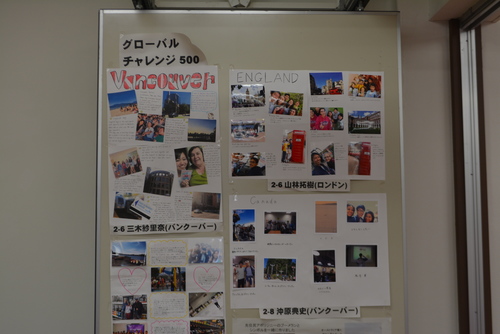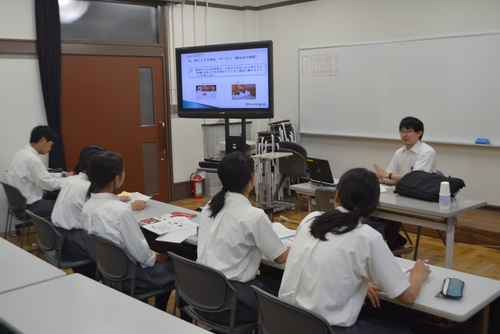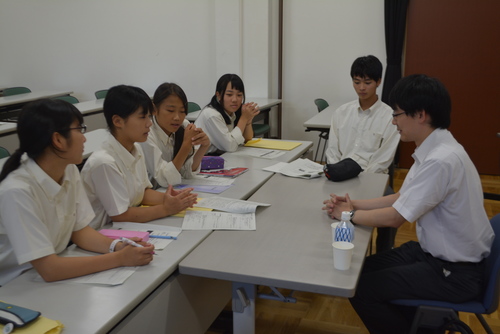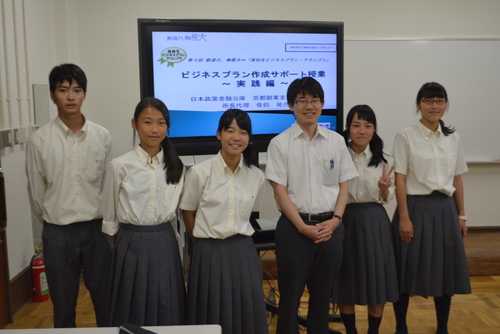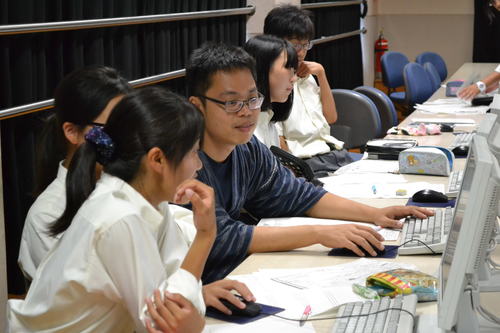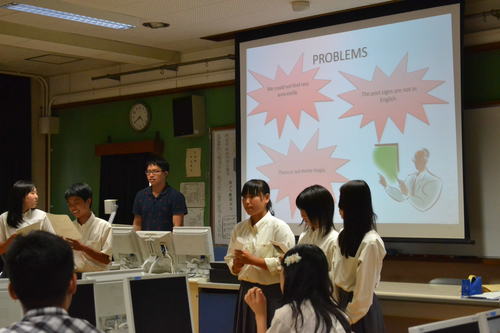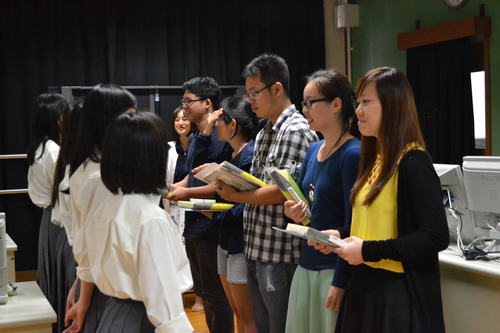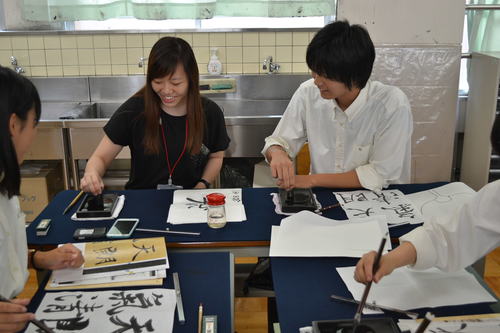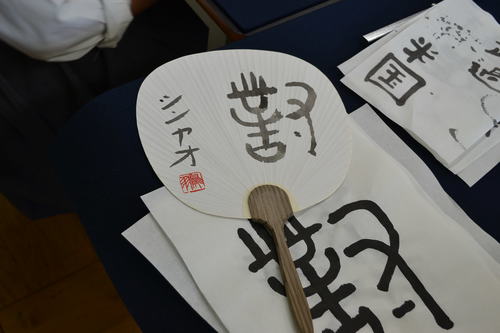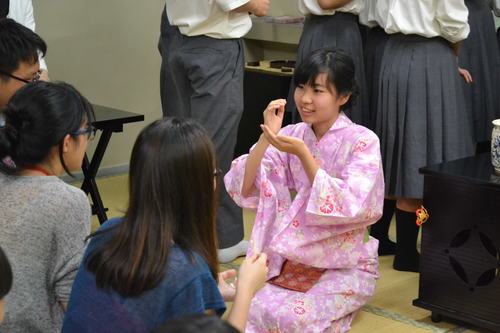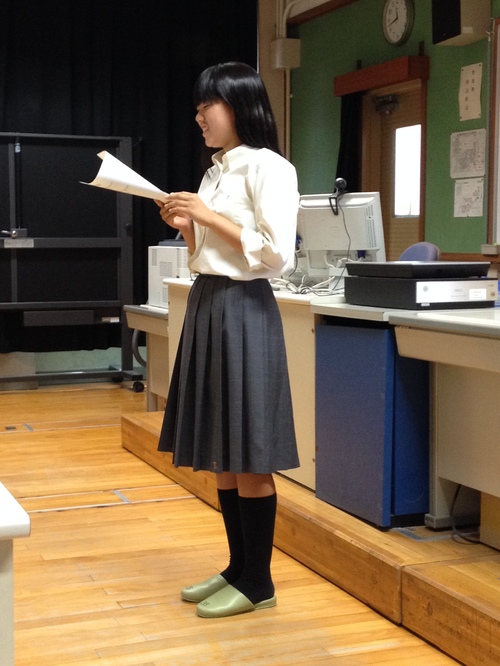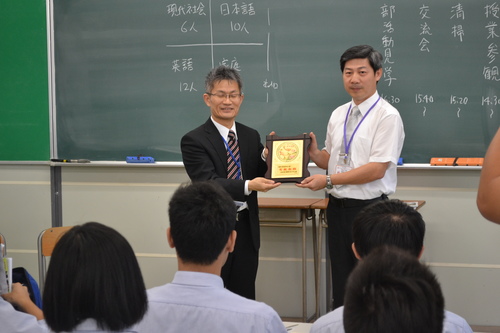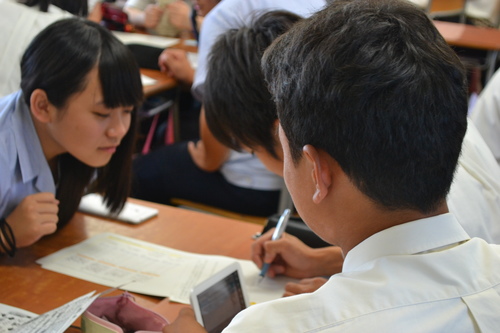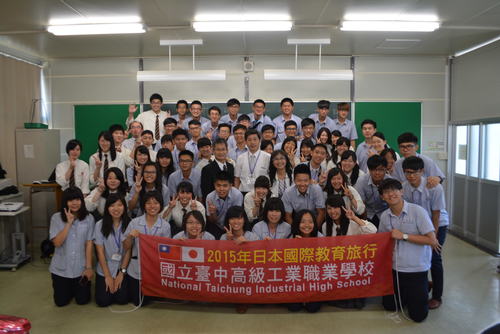英文サイト
ENGLISH
SGH Workshop at Osaka University 2016/01/10
12/24
SGH Overseas Study in Singapore 2015/12/22
12/19
SGH Overseas Study in Shanghai 2015/12/21
12/20
Five first-year students, led by 2 teachers, arrived in Shanghai to begin their overseas study. After their arrival, students strolled through the Pudong area as well as the Bund area, comparing traditional buildings with those of the new business district. Along Nanjing East Road (similar to Ginza in Tokyo), students also conducted fieldwork.
12/21
Chinese High School Visit JENESYS2.0 2015/12/14
Innovation Studies Lectures and Workshops 2015/12/12
Through the workshops, the students discussed the reasons for the success or failure of presentations, and how to determine whether or not ideas have been transmitted to the listener. The 100-minute event passed by quickly but was able to increase student motivation.
Global Network Kyoto Open Class 2015/11/20
"EU Comes to Your School" 2015/11/13
English Training 2015/10/17
SGH Overseas Study in Taiwan 2015/10/13
10/3
First-year students in the Global Studies course visited the Kyoto Prefectural Library to study the building itself as a modern cultural heritage, and to learn how to conduct proper research using the reference materials available at the library. Students also received a tour of the library, its reading room, and its archive section, which is not normally open to the public.
Rengasai SGH Exhibition 2015/09/04
High School Business Plan Grand Prix 2015/08/27
Visit to Kataoka Company 2015/08/21
7/18
Kyoto as #1 2015/06/17
June 17th
Students in the Global course, and voluntary participants from other courses in our special Saturday class, examined several #1 rankings in various topics around the world. The students then researched a topic of their choice in which Kyoto was ranked #1 in the world or in Japan, or something within Kyoto Prefecture that had been ranked as #1. Students then gave presentations based on their findings.
Taiwanese High School Visit 2015/05/27
Today, the entrance ceremony for our incoming first year students took place. The ceremony was in the third floor auditorium of our renovated, main building. Many things were new and clean: painted walls, a shiny floor, fresh flowers, and new school uniforms. Everything was perfect!
Global Network Kyoto Exchange Meeting 2015/02/10
On February 7th The Global Network Kyoto Exchange Meeting took place at Kyoto Prefectural University. Eight prefectural high schools of Kyoto got together, attended poster sessions and made presentations. The second year students from Toba gave a presentation in English titled, "Kyoto and Kombu -- Changing Local Value into Global Value--".
It was their first experience presenting in English, so they were very nervous. They gave a wonderful presentation and felt very satisfied.




Kyoto and Kombu
-- Changing Local Value into Global Value
Kyoto Prefectural Toba High School
Presentation Team
In rapidly globalizing Japan, we have come to realize that our local value is valuable to the world, too. The "visiting world heritage sites" boom is a good example. The discovery of our local value is important when we think of Japan as a global society.
Washoku was added to UNESCO's Intangible Cultural Heritage list in 2013. What is an important ingredient when we make washoku? Kombu.
Today, we're going to focus on kombu, and talk about its potential. Is it possible that our local food, kombu,will spread worldwide?
Washoku treasures umami flavor. Kelp stock plays an important role in washoku's umami taste. If you try to taste only the kelp stock, it may not taste good the first time. Kelp stock is thin and actually it doesn't have much flavor. It seems that foreigners don't appreciate its taste and smell. But kelp stock is likened to bass in an orchestra. It is not too much to say if it were not for kelp stock, washoku wouldn't be what it is.
Now, we are going to speak about one of the most important things to make kelp stock: kombu. Kombu is a high alkaline food. These days the human body tends to be acidic because we eat too much lipid or meat. Kombu can change an acid body into a healthy, alkaline body.
Kelp stock has different flavors in parts of Japan, but there is no doubt that Japanese people have made kelp stock and have enjoyed tasting it anywhere.
Next we will talk about the production areas of kombu.
Kombu only grows in Japan and 90% of kombu is grown in Hokkaido. The environment affects its flavor, so the production areas become the brand. Kombu gathered in Hokkaido is divided into six brands. Kombu gathered on the coast of Wakkanai is Rishirikombu, which ranks as the top quality product.
Rishirikombu creates clear and good-flavored soup stock. It is often used in Kyoto, where the colors of ingredients play an important role in dishes. The kombu gathered in Rishiri Island and Rebun Island is called Shimamono and is highly valued as a luxurious ingredient.
Japanese people have understood the value of kombu and spread it. We have used limited resources effectively.
The origin of kombu comes from the Ainu word KONPU, so in EZOCHI, the present Hokkaido, people ate kombu.
In the NARA period, kombu appeared in historical documents for the first time. The means of transportation was not established yet, so kombu was very precious. Therefore kombu was treated as valuable as gold. At that time people used kombu not as food but as medicine.
In the HEIAN period, kombu was a food which only privileged people could eat.
In the KAMAKURA period, marine transportation started to develop and then a lot of kombu was carried to KYOTO. Kombu gradually changed from medicine into food. Kombu began to be popular to make soup stock in the KAMAKURA period.
In the EDO period, the west sea route was developed. It enabled people to transport more supplies more cheaply and safely from EZOCHI to OSAKA. The route by which ships carried kombu is called the "kombu road." Thanks to the establishment of the "kombu road" common people got to buy kombu at a lower price and enjoy the taste. The kombu road extended to China through Kagoshima and Ryukyu, the present Okinawa. The Satsuma clan used the profit that came from kombu in order to overthrow the Edo Shogunate, which led to the Meiji Restoration. It is interesting that the "kombu road" contributed to the modernization of Japan.
Foreigners recognize kombu as sea weed like wakame and nori. Kombu is not so famous as sushi and ramen in the world, which is because it is often used in soup stock.
Speaking of Japanese food they remember sushi, tempura, sukiyaki, and oden. However, few of them know that kombu is usedf or cooking.
We researched about what kind of image foreigners had about kombu.
First we visited the owner of Heihachi-chaya, a Japanese-style restaurant established 400 years ago. We learned there is no country where people eat or use kombu. Japanese people think umami flavor produces deliciousness, while people abroad find deliciousness in oils and fats. We realized the cooking use of kombu is unique to Japan.
We asked foreigners at Fushimi-Inari Shrine questions about Japanese food and kombu. These are the results of the survey.
The results show that most foreigners have good impressions and good images of Japanese food. However, nobody had heard about kombu or seen it before. Everyone asked me, '"What is kombu?'' We felt that we had to convey the value of kombu. To do so, we need to know more about kombu.
The interest in Japanese food has been reducing because of the diversity of food now in Japan, while international interest has been increasing. Through these researches, we feel we ourselves have to reconsider the role of Japanese food culture, Washoku'sculture.
Kombu eaten only in Hokkaido has spread all over Japan. We can say that the process is the globalization of kombu. Considering the value of kombu, it is possible to globalize it more from now on. Kombu is a heritage Japan and Kyoto are proud of. High school students in Kyoto, why don't we tell the value of kombu from Kyoto to the world? Let's change our local value into global value!
Fieldwork at Toji Temple 2015/01/22
Today the students of Toba's third year Active English class went to Toji Temple to ask foreigners what they think of different Japanese things. Students chose their own subjects, such as anime,J apanese food, Japanese language, Japanese temples, and souvenirs. After choosing their topic they wrote approximately five questions to ask participants.
Students were able to communicate with people from all over the world using English. Participating foreigners were from many different countries, including the USA, England, Mexico, Spain, and Australia.
After the students returned to Toba they said they had a good time and that it had been very fun for them.



